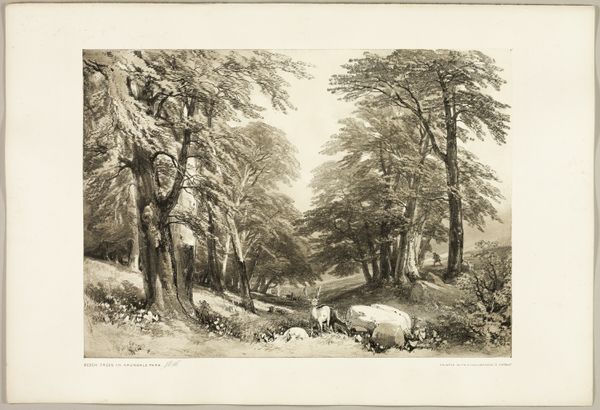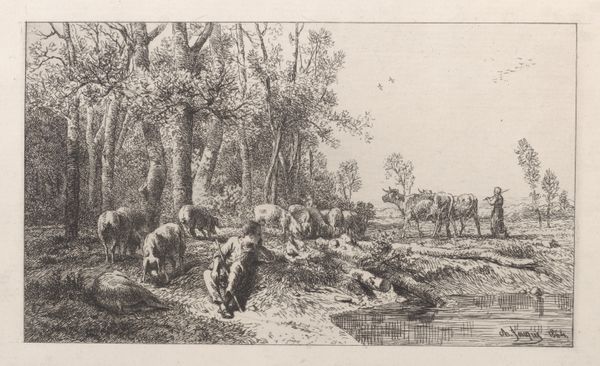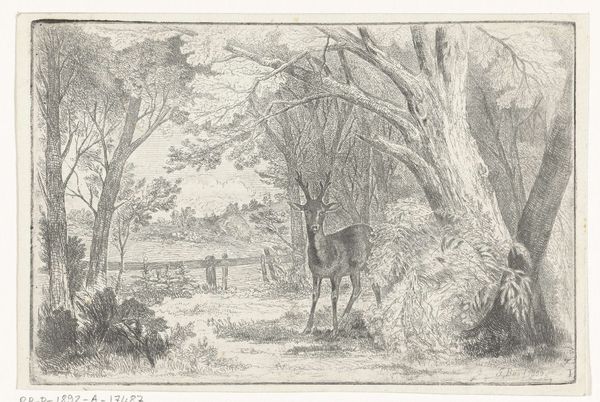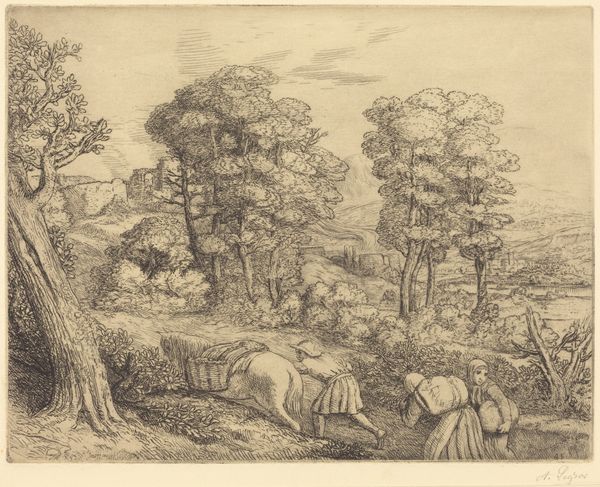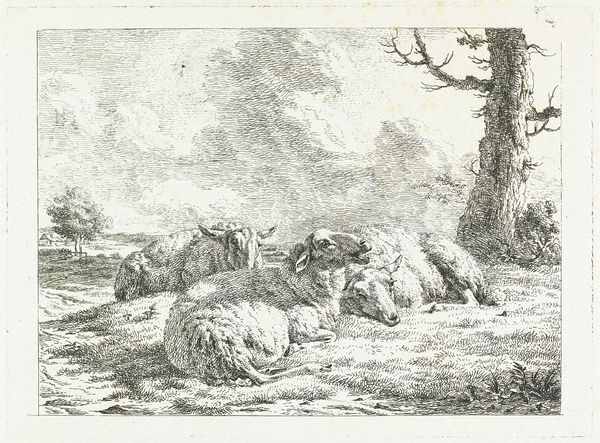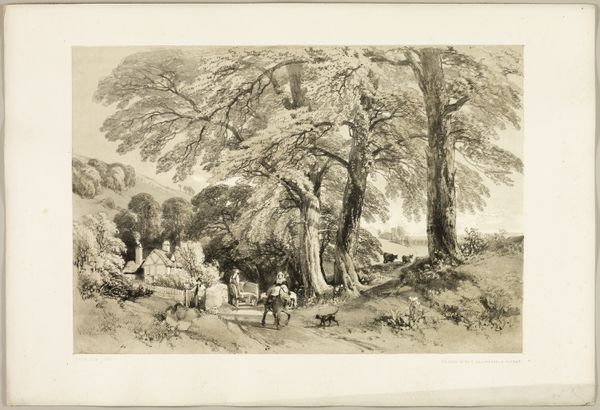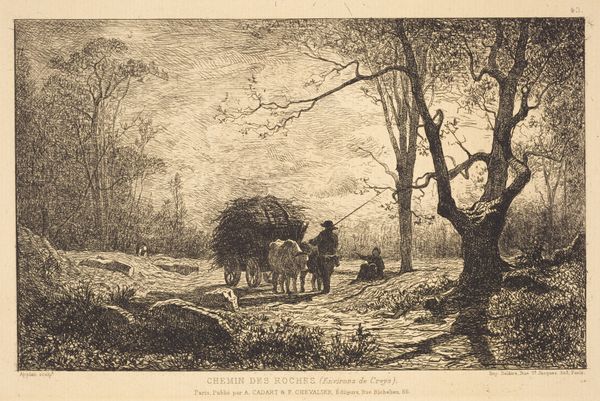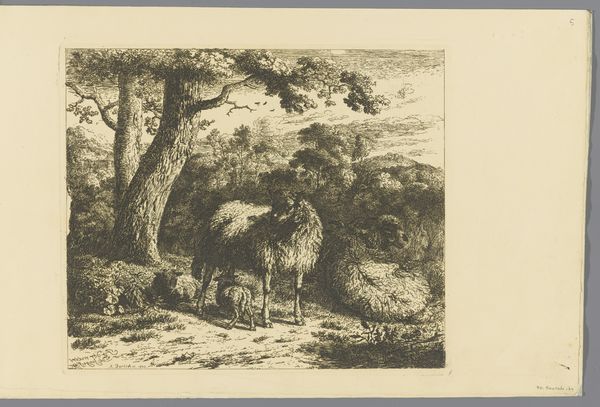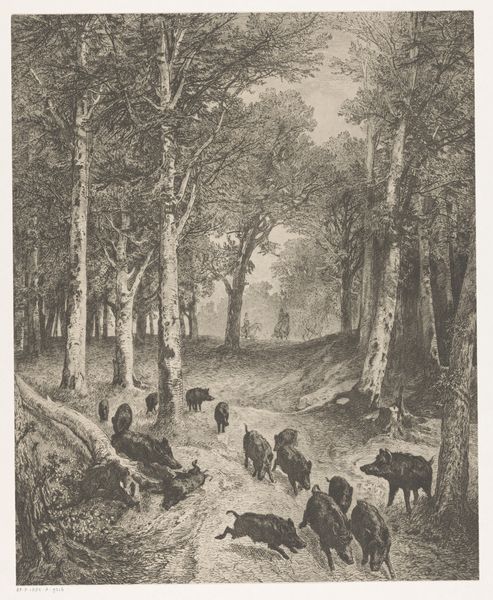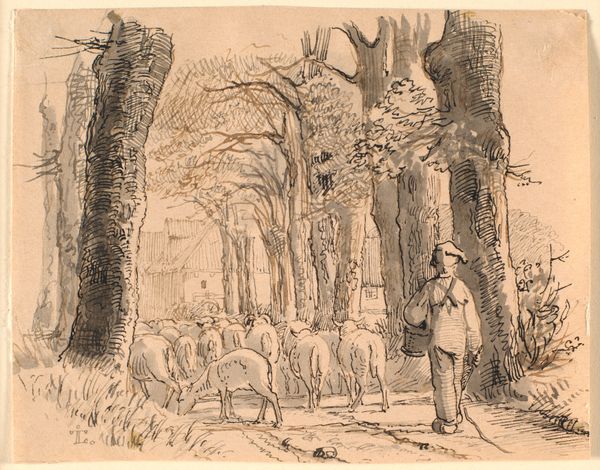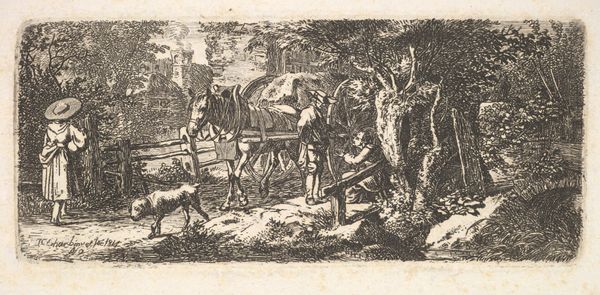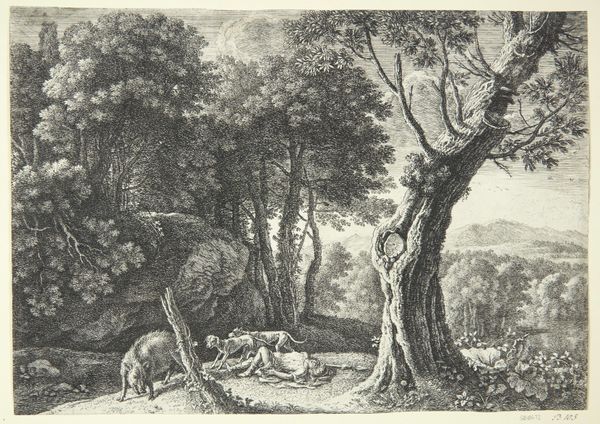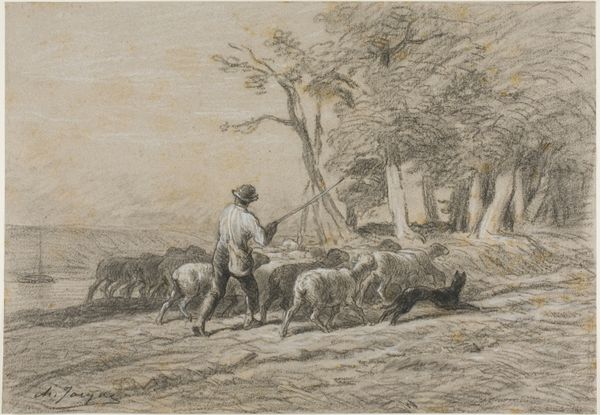
drawing, lithograph, print, ink
#
drawing
#
lithograph
# print
#
landscape
#
ink
#
genre-painting
#
realism
Dimensions: 97 mm (height) x 126 mm (width) (bladmaal)
Curator: Let’s consider this landscape genre scene rendered in ink, entitled “Vogterdrengen,” or “The Shepherd Boy,” dating to 1845, created by Adolph Kittendorff. My first impression is one of intimacy. Editor: Yes, there is an interesting focus on the structural elements that pull the viewer in. The strong verticals of the trees frame the narrative and direct the eye along the path. I also see contrasting textures. Curator: I think this drawing opens a discussion on the relationship between childhood, labor, and the idealized rural life prominent during the Biedermeier period. We have this young shepherd boy positioned almost as a mediator. His simple garb, coupled with the presence of livestock, points to the economic realities of the time, particularly childhood labor practices in rural communities. The very fact that his identity seems linked so fundamentally to this singular economic purpose... Editor: But look at the composition. Notice how the lines, thin yet deliberate, construct form and define space, creating this visual rhythm leading into depth. Curator: This kind of artistic decision creates a sense of harmony with nature, perhaps softening the starker realities. Think of the legacy of pastoral narratives… the use of nature to perhaps obfuscate underlying issues. The lack of any individualized features to the subject, making him representative. Editor: Indeed, the textures almost create this haptic quality, encouraging the viewer to visually “touch” the trees and feel the earth beneath the boy's feet. This engages multiple senses beyond just sight, doesn’t it? Curator: To move toward this engagement while glossing over very tangible exploitation is a complicated element here, isn’t it? Overall, the image gives insight into the economic roles thrust upon children in 19th-century rural settings. Editor: Well, whether we consider the visual language or its societal narrative, this drawing by Kittendorff serves as a captivating intersection of artistry and socio-historical context. Curator: Precisely, understanding its dual commentary enables us to more richly perceive art's power in society and reflect on social accountability today.
Comments
No comments
Be the first to comment and join the conversation on the ultimate creative platform.
